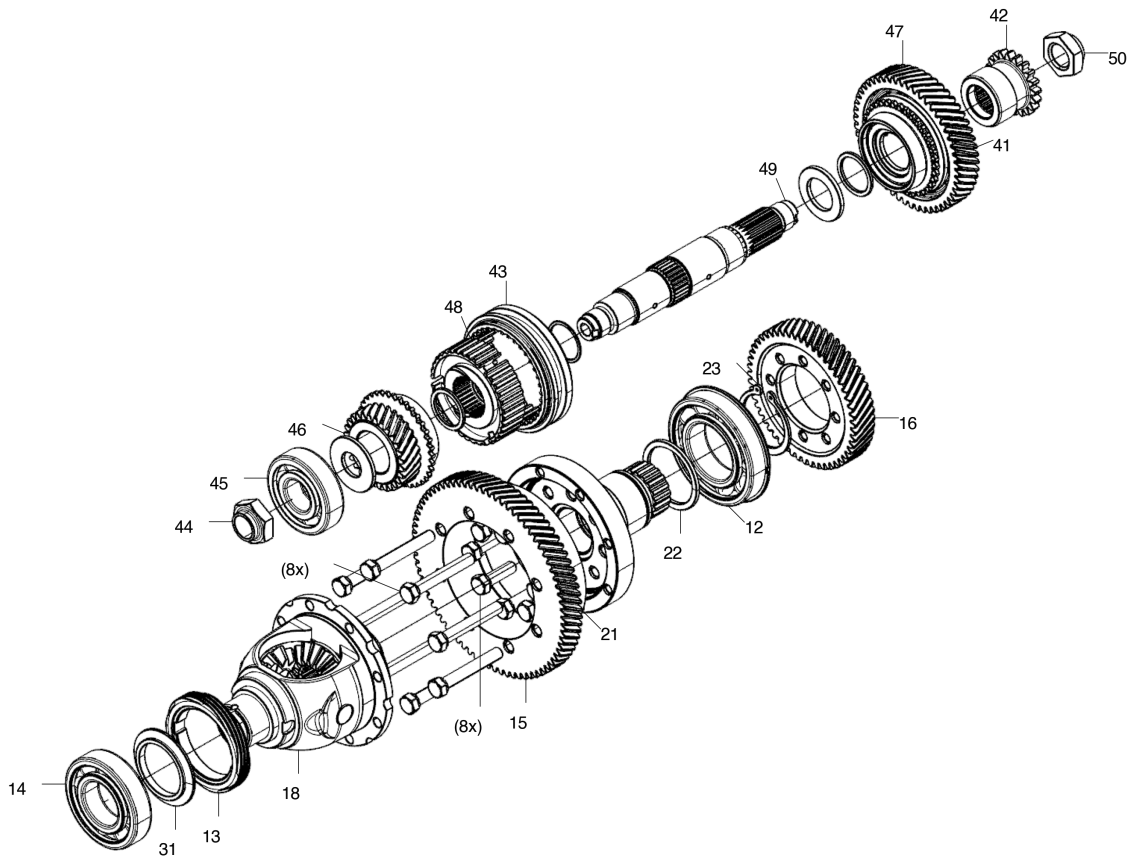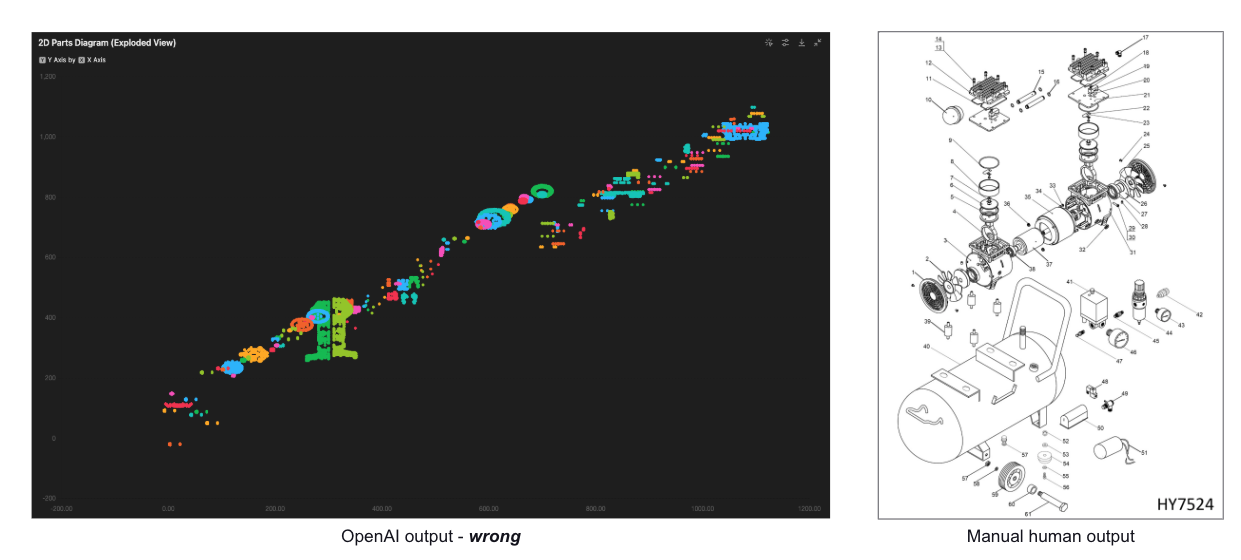
Spare parts catalogs are critical to supporting products once they leave the factory. Whether it’s an excavator in the field, a torque wrench in a repair shop, or a vehicle in a dealership, these catalogs help technicians understand how to disassemble, service, and repair physical products. They contain exploded views, part numbers, repair steps, and assembly logic, effectively serving as the interface between complex hardware and the humans tasked with keeping it running.
Spare parts documentation is used across industries: automotive, industrial machinery, professional tools, consumer appliances, aerospace, and more. It's an essential part of aftermarket operations, powering everything from warranty repairs to DIY servicing.
Today, spare parts catalogs are created through painstaking manual work. Companies either rely on in-house documentation teams or outsource the process to specialized vendors. Engineers pull together CAD screenshots, BOMs, spreadsheets, and revision notes, stitching them into 2D diagrams and technical tables that explain the structure and function of a product. The process can take anywhere from a few hours for a simple parts drawing to many weeks for a complex assembly.
The workflow itself is linear and brittle. A small change in a subassembly might require updates across dozens of documents. Visuals are often generated manually from CAD models, and annotations must be placed by hand. There’s no consistent way to capture engineering intent, just individual effort and institutional memory.
Creating spare parts catalogs manually is tedious, repetitive, and difficult to scale. It’s the kind of work that consumes large engineering teams who could otherwise be solving higher-value problems.
More importantly, these catalogs are hard to QA. Since they’re built by hand, errors inevitably creep in: mislabeled parts, outdated revisions, inconsistent callouts, or missing steps. There’s no clear audit trail or version control. Verifying completeness or correctness is a slow, manual process. Every change increases the risk of something breaking downstream.
Even for the people who use them, catalogs often fall short. Technicians have to navigate large PDFs or, worse, massive binders full of past catalogs, desperately hunting for the right view or SKU. And because more intuitive options like 3D animations or interactive diagrams are even harder to produce at scale, they’re rarely used.
The result: delays in repairs, added cost, and a frustrating experience for everyone involved—from engineers to technicians to end users.
One would think that, with all the advances in Generative AI, this problem would’ve been solved by now. However, while general-purpose LLMs like ChatGPT may be impressive with language and logic, they struggle when faced with tasks that require real-world physical understanding.
Generating a parts catalog isn’t just about describing components. It is about interpreting 3D geometry, understanding spatial relationships, and reasoning about how mechanical systems come apart and go back together. You can’t hallucinate your way through that. For example, if you ask ChatGPT to create an exploded view, you’ll get a generic diagram or outright hallucination that misses the point entirely.

At Foundation EGI, we’re building an AI platform designed specifically for engineering. Our Engineering General Intelligence (EGI) system combines domain-specific language models, simulation tools, and structured engineering logic to understand not just the data, but the intent behind it.
When it comes to spare parts catalogs, this means we can go from a 3D model to a complete, accurate exploded view that is annotated, version-controlled, and ready for downstream use. Our platform understands how parts relate, how assemblies work, and how changes ripple through a design. And because everything is generated programmatically, it is free from errors and seamlessly integrated with your downstream publishing processes.
We’ve demonstrated orders-of-magnitude improvements in generation speed for our customers. What once took weeks of manual work can now be done in minutes. And because it’s all structured, you can:
This isn’t just about automating paperwork. It’s about freeing engineers from low-leverage work, accelerating time-to-service, and improving the quality and usability of the tools technicians rely on every day.
From faster repairs to reduced warranty costs and better end-user experiences, automating spare parts catalogs is one small example of how EGI can transform product development and support.
If spare parts catalogs are a bottleneck for your company, please reach out to us at info@foundationegi.com.